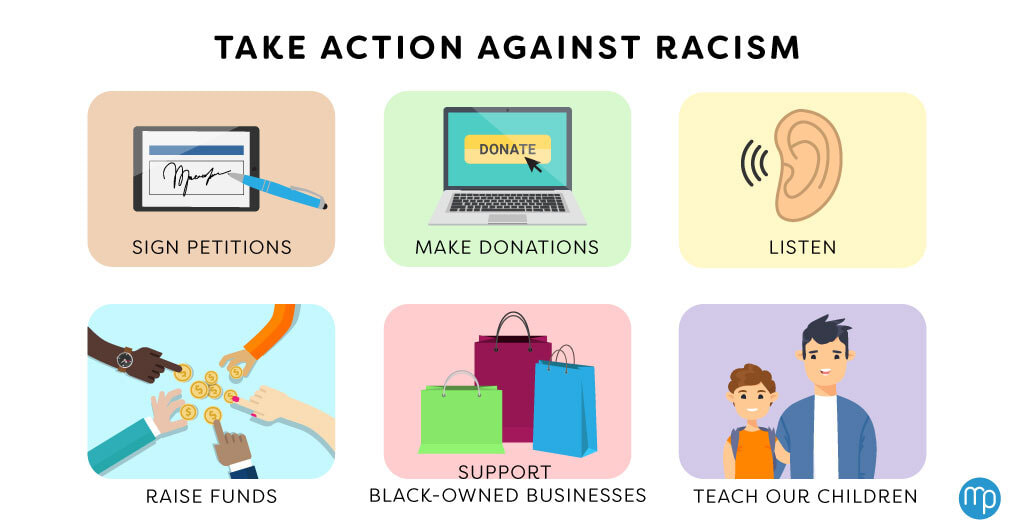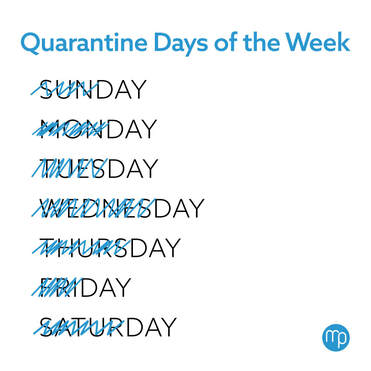|
Successful associations have more than occasional high-performing components or chapters; they’re built upon a base of overall achievement and solid quality control. However, if quality control is an issue, that could hinder chapter success. According to Mariner Marketing’s Chapter Benchmarking Report, 71 percent of survey respondents indicated that quality control is considered an issue by headquarters (HQ). Not surprisingly, 40 percent, which was the majority of survey respondents, described it as their top concern – namely, that chapter products and services, whether they're virtual events, membership meetings, and the like, can be uneven or frequently low quality at worst. Let’s put those worries to rest and look at ways to engage all of your chapters and bring the overall quality and performance of them closer to that of your best. These 6 tips will show you how.
1. Foster friendly competition Analyze the metrics you use to measure your chapters and identify your most consistent performers, then use that data to create a single yet realistic goal for chapters that are struggling. It can be tied to an annual membership drive or philanthropic event where participation within a chapter can boost its overall success. This allows for even your under-performing components a fair chance to succeed, while potentially inspiring them to see their potential going forward. You can also opt to reward creativity and offer the component with the freshest idea or concept for membership recruitment (for example) the chance to lead that online event for an inter-chapter competition.
2. Utilize the buddy system
Take advantage of the metrics you use to measure quality control and take note of which components do well and those that have considerable work to do. Break it down by area to distinguish between member services, fundraising, and activities. Pair top performers with struggling chapter reps. This will not only help build camaraderie and rapport between your chapters, but it will allow metric leaders to use their own words and approaches to be a resource to those who are underperforming. Sometimes help from peers can work wonders – it’s simply the way chapter leaders hear certain tips or approaches from someone in their shoes that can turn their own metrics around. Buddy up and let chapter-to-chapter leadership flourish. 3. Empower your chapters with the tools they need Another way to boost chapter performance is to arm chapter reps with the necessary tools to effectively manage their chapters. Since many chapter reps are volunteers with full-time jobs – making the most of their limited time and resources is paramount. Make sure you cover the basics; every chapter should have a toolkit that includes a chapter website, communication, and digital marketing tools to promote the association’s brand while maintaining consistency. If you can, include online event management tools and best practices for promoting activities and events. Make your toolkit even more robust by providing an online community for members to interact with each other that include online database management. A comprehensive association management system (AMS) maximizes the time of your chapter leaders while providing them the most useful tools to recruit and retain members.
4. Recognize stellar chapter performances
Provide your most successful chapters with the recognition their hard work deserves, and also recognize those who made an outstanding effort. You can publicize a short awards ceremony on social media or post names on your website to really highlight standout performances. Include a variety of categories and awards such as a Rising Star Award, Most Creative Event, etc. so that people can vote for the winner online prior to the ceremony. A comprehensive AMS will have secure, online polling functionality, so you can leave the voting up to national-level staff, or you can open it up to everyone, which will further enhance the bond among your components. Everyone loves a moment in the spotlight, and it gives those who aren’t receiving awards reason to strive in the following year. You can also offer prizes in terms of discounted dues membership or a special section in your email newsletter to more frequently highlight chapters that are striving to go above and beyond. 5. Create a system for officer transitions Consistency is a key marker of ongoing success. One way to ensure chapters maintain their best elements year over year is starting with a standardized toolkit and support resources to onboard new leadership. A standardized toolkit will help officers keep all relevant documents and reports in an easily accessible place like an online portal, which would be a great start for an incoming officer. It goes without saying that outgoing officers should help train incoming officers. It’s also crucial to have an ongoing FAQ, ideally one passed down from officer to officer. It essentially becomes a success guidebook for each new officer to learn from mistakes or common questions previous leadership experienced and solved. Making sure your chapters have these support resources in place sets up incoming officers for success. You can also take time to speak with successful chapters about the strategies they employ during officer transitions and take advantage of what works for them by passing it along to all your other components. 6. Build strong chapter rep relationships Your chapter reps are people who’ve volunteered to lead, who were willing to take on the responsibility of that role because they truly support and believe in the mission of your association. Strengthen your bond with them by reaching out; engage them by getting to know their interests and personal goals. Help them feel seen not only as a chapter rep but as a person you respect. Emails and text messages are fine, but phone calls and video chats are better. Another suggestion before hopping on the phone is to send a simple chapter leadership poll to understand their needs and expectations. Review their responses on your call and use this connection to also clearly establish your expectations from them and the chapter; illuminate them by defining what success looks like to you. Share the metrics you’ll be using to measure their chapter success while also clearly stating your goals.
Following these tips will help you better support struggling chapters by maintaining quality control and offering a little more TLC when it’s needed. Consider implementing a solution that will empower you and your components to accomplish more, maintain visibility, and manage membership with ease.
Updated since original publication on 1/9/20.
Dealing with officer transition is a busy time of year for most organizations. If you’re part of the management team helping onboard new recruits, being super organized and having structured training sessions allow that process to run more smoothly. And if you’re an incoming officer, staff member, or new admin, or someone who’s just been given more responsibilities in managing the organization, learning the ropes might feel like drinking from a fire hose.
We’re a few steps ahead, though (and if you’re reading this, you are, too!) The following resources will help you navigate this period of transition like a pro. The objective is to build upon the great work you’ve already done rather than start over every time.
Support Documentation The Support Center is an online resource for general memberplanet administrators. If your organization has an enterprise account with memberplanet, first check your customized success site for how-to documentation and FAQs. Our support articles have detailed, step-by-step instructions, examples, screenshots, and sometimes video. Admin role management: How to give memberplanet admin access to officers in your organization. Manage bank access for administrators: Choose admins/staff members who are allowed to access your organization’s bank info. Set up a new bank account for your organization: Our secure bank verification process requires a government-issued ID for your group to receive funds in a new account. Review reports for copy events, forms, and more: Each feature has its respective reports section, and any type of transaction data can also be viewed in the All Payments Report. Forms, donation campaigns, and events can be copied and edited.
memberplanet Blog For actionable tips, training strategies, and leadership advice, visit our blog category: officer transition. Articles include resources for both incoming and outgoing staff or administrative users.
You’re trying to keep things running smoothly for your association (or your chapter), but are spending too much time keeping track of spreadsheets, finances, and events. Whether you’re new to your management role or going through a time of officer transition and feel like you’re running in circles, you’re not alone. If you’re ready to pull all your hair out, read this for some membership-management relief.
1. Start by organizing your members
If you aren’t already, consider using membership levels to organize your members. Membership isn’t necessarily a one-size-fits-all option, and that’s OK. Associations often collect more if they allow members to pay their membership dues and give a donation at the same time. The generous person/member company willing to pay a couple grand (and then some) can be part of a top-tier membership level (a high-value one with all the benefits and perks), while folks with a smaller budget may be able to access basic membership for $20. Some associations even offer free memberships as part of a strategy to entice users to upgrade to paid status later on. Give the option to automatically renew membership. It’s great to have different levels, but you still need members to renew – and they won’t always remember (or want) to manually take money out of their paycheck. No matter how much they love you and your cause, making it inconvenient for your members to part with their money is painful, so give them the convenient option of an automatic payment plan. For members who opt to pay manually, or those who are past due, send reminder emails to keep them informed. Communicate to members using the levels, types and auto renew statuses. Your messages should be customized to target specific recipients, whether those are your top-tiered members, lapsed members, or another list based on variable data.
2. Get mentally organized to save time and sanity
First, set realistic goals. Make them ambitious but practical; define targets that you think your team can actually achieve based on last year’s or last quarter’s data. How many members can you obtain, retain, or connect with in a realistic timeframe? Now that you’ve got some targets, recognize the fact that you’re not likely to hit them unless you use a calendar. Whether it’s a smartphone app or a physical appointment book, a calendar is great way to get organized and hit consistent milestones or deadlines. Set your priorities at the beginning of each day. List them in order of importance. Priorities help you finish what you start, which is always a good thing to do in business (and in life). Review each of your goals at the end of each day. See what you achieved, what you need to achieve, what you did well, and what you could do better tomorrow. Finally, clean up your workspace. Many leaders find it difficult to stay mentally organized if their physical workspace isn’t squared away. An office or designated work area should help improve productivity, not serve as a nesting place for small rodents. So, throw away that stack of unused lunch coupons, sift through the mound of papers, and set traps, if necessary.
3. Delegate the right tasks – and know which ones to do yourself
Delegation is simple – but if you’re not doing it right, you could be wasting even more valuable time. First, you need to identify the tasks you should delegate and the ones you shouldn't. Here’s some of the best stuff to pass off:
As a leader or manager, it’s important to let go of some of these jobs, even if you love or have gotten used to doing them. Whether your association has 20 members or 20,000, it pays to stay organized, as well as to make sure the memberships you offer are flexible and diverse enough to attract new members and retain existing ones. Managing membership can be tough, but it doesn’t have to be a hair-pulling experience. Visit memberplanet to explore an AMS that will help your association succeed.
Updated since original publication on 12/20/2017
Great trainers are naturally great leaders. And by definition, great leaders are those who inspire confidence, strength, and optimism. They are the folks who can motivate – not force – their administrators to reach their fullest potential as they ascend to a new role or take on greater responsibilities. And we all know how important a good trainer is during officer or staff transitions.
The term admin can be applied broadly – it can mean your committee heads, officers, or anyone you’ve put in charge of tasks that keep your organization running smoothly, whether it’s an association, chapter, or other type of membership-based group. As far as training the best admins goes, a great trainer/leader uses methods that can be boiled down to a few guiding principles. I call them 5 Keys to Training Your Staff Admins; master these, and your team will be set for success.
1. Demonstrate
For every specific skill or task to be instructed to your team admins, explain first what it is you’re about to share. More importantly, explain why it is important for your organization. How does it work in its specific scope? How does it affect the overall team? It’s important to give a sense of the overall flowchart of the group and the admin’s role within it. “A leader is one who knows the way, goes the way, and shows the way.”
2. Observe
You’ve provided the instructions to light the path. Now have your team show you how to do it. You’ll be able to see if how much they’ve retained from their training, and how well they apply their knowledge and adapt to different situations. Of course, knowing what you know, don’t keep them in the dark. Adjust the course when necessary. Encourage and empathize.
3. Tailor
We are all individuals (maybe some are more like rebels) in the world, and personality will eventually be revealed, especially in the course of training. Make time to discover your admins’ own skills and experience. Do they enjoy a steady pace? Or do they work best at light speed? But be sure to recognize their different ways of learning, and be open to adapt to give each of them the answers they’ll need ongoing.
4. Empower
Grow your staff admins. As they navigate their new role, give them space to make mistakes – that’s how we really learn. Assign a project or task as a test (e.g. an upcoming social event, or a fundraising campaign, or a yearly calendar of projects) and see how they rise to the challenge. Let them own it. If they can construct it, it’s like a rite of passage.
5. Support
Provide support and feedback. Work with each admin to set up short- and long-term goals for themselves and the organization and make sure they know how to use the tools available to them. On the feedback loop, too, show them what’s been done previously by their predecessors. Encourage them to find ways to innovate and improve efficiency while building on past successes and the great work that’s already been done.
Even after they’ve completed their training, seek out your staff admins’ feedback and listen to their perspectives. Learning is a two-way street, and hearing from them will bolster your own knowledge and help you further educate them. When your admins are confident that you as their trainer/leader have their back and their interests at heart, they’ll operate at peak productivity, and they will lead the rest of the organization in the way they’ve been instructed. This is the way to build a lasting team and community. “Without a sense of caring, there can be no sense of community.”
Updated since original publication on 02/12/18.
Here we are again. It’s the time of the year when we have to start setting goals for our organization. And after 2020, a year like no other, 2021 is sure to be interesting.
When it comes to goals, there’s one key question we need to ask ourselves: Can these goals be told in a story? You’ve heard the adage: Facts tell but stories sell. It’s true in marketing and advertising. It’s equally true when it comes to setting goals for an organization. That’s because setting a goal is just the first step in the process. After we’ve developed goals for our organization, we have to sell it to the troops, and we need to do it convincingly. If 2020 forced us to prioritize what was most important to us in life, then our goals for 2021 must be endeavors worth pursuing. And that comes down to good communication skills. It’s a fact. People make decisions based on emotions rather than logic. Whether we’re trying to accomplish a specific task or raise funds, we have to be able to communicate our goals clearly and emotionally to our members and constituents. We have to bring people on board. Rally our members to our cause and lend their support. Y’know, herd cats. (If you've ever tried that, you know it's very hard to do.)
If we want others to join us on our quest, we have to be able to show our members why ours is a worthy cause. The more enthusiasm we can generate about our goal, the easier it will be to accomplish.
How do we inspire the type of passion that we want from members, the type of enthusiasm that’s going to carry us through good times and bad until we cross our goal line? With a good story. How true it was when "Game of Thrones"' Tyrion Lannister said, "There’s nothing more powerful in the world than a good story. Nothing can stop it. No enemy can defeat it." Whether our objective is a one-time, standalone goal (think sponsoring a clothing drive for natural disaster victims) or part of a larger, long-term initiative or mission statement (think serving the needs of children with disabilities) a good narrative helps us communicate more persuasively with our members. The more we can connect with people on an emotional level, rather than a purely rational one, the more excitement we’ll generate for our cause, the faster we’ll achieve it … and the invested everyone will feel. According to Joseph Campbell, one of the world’s foremost authorities on the significance of myths and storytelling, “Everything starts with a story.” “Everything starts with a story.” – Joseph Campbell
Great stories touch us on an emotional level and teach us universal truths about human conduct. Think about it: Every story we’ve ever been told has had a point to it, a theme. The theme is a lesson about life. Something to which humans should aspire. A goal.
Consider your goals from a storyteller’s perspective As we set goals for our organization, let’s take time to consider these goals, one by one, from a storyteller’s perspective. Every story has a hero. In our case, the hero is our organization. Every story has a conflict. There’s something wrong that needs to be fixed. Perhaps we’re trying to raise money to send aid to families with children adversely affected by COVID-19. The conflict is, some children don’t have means to basic necessities, and our organization wants to fix that. Every story also has a resolution. In our case, it’s our objective. Accomplishing our goal will resolve the issue at hand and bring the story to its close. 
Can we incorporate these elements into our goal and use them to weave a compelling story that captivates our members? The truth is, people have a fundamental need to connect with something larger than themselves.
A good story about our organization and its goals will help bring more people into our tent and enfold them into its larger mission. As organizational leaders, we must be able to find the narrative within our cause, capitalize on our natural storytelling strengths, and express our goal with clarity, creativity and conviction.
Embrace the conflict
Oh, yeah. There’s one more thing to remember, too. By definition, great stories involve a journey that is rarely easy. In fact, as is often the case, the more conflict, the better the story. So let’s approach our goals with the same mindset. It won’t be easy to achieve (and, if it is, perhaps we’ve set the bar too low). In most narratives, the hero has a long-term goal that is fed by a series of short-term goals. Accomplishing our short-term goals are the means by which we eventually achieve our ultimate mission. We can think about our organizational goals the same way. Our long-term goal is usually provided in our mission statement. It is our story’s theme. As you know, our long-term mission is achievable, measurable and time specific.
Our mission (not an impossible one) then must be broken down into shorter-term functions and operational initiatives. Short-term goals are great ways to identify specific functions that need to be undertaken, and offer measurable results that allow us to chart our progress, feel a regular and much-needed sense of accomplishment, and move us further along the narrative toward our ultimate goal.
And it’s that sense of accomplishment – of fighting for a cause, righting a wrong, creating a better tomorrow – that creates the pride and emotional connection that will keep our protagonists (members) coming back for more. So when it comes time to set a goal for your organization, be bold, creative and inspiring. Identify the story inherent within your mission and use it to assemble your short- and long-term goals. In the end, the goals you set today will become the stories your members live tomorrow. Let’s make them exciting ones!
Have a goal in mind? Our event and donation sites (templates included!) make it easy to tell your story.
Updated since original publication on 12/16/16.
You’re put in charge. Now what? Group leader transitions are not without their complications, but that doesn’t mean they have to be difficult. By following a few key steps, you can ensure a smooth transition (think smoothie, not boba) that is beneficial for the entire organization. The transition period is the time for new admins to prepare for their position while outgoing officers gain a sense of closure as they move on from a job well done. The goal is to maintain a sense of seamlessness and continue the great work that’s already been completed. Remember, you’re not starting from scratch. When done right, you avoid setbacks (which might feel like a chunk of fruit stuck in your straw).We’ve put together three pro tips for pulling off the ol’ switcheroo with minimal disruption to your organization. 1. Maximize your training Access to information is critical for the continued success of the organization and the potential achievements of the incoming officer. They say teamwork makes the dream work, so make sure new and old leaders come together as a unit to make the transition easier and more effective. Maximize the opportunity to learn from the outgoing officer by asking the right questions during the training period. Author and business mentor Michael Hyatt identified 20 key questions to ask other leaders to bolster your own skill set. Here are some key topics to inquire about during the transition process:
Additionally, reviewing goals and objectives from previous terms allows transitioning admins or group leaders to update themselves on the progress of those goals, so they have a reference point for the upcoming term. The former officer should provide a status report on ongoing projects as well as current budget and financial records. To help you build upon the work that’s already done, check out the reports section on the platform, which provides a history of your group’s transactions. You can also see tracking for emails, event sites, and donation campaigns. 2. Make a great first impression We all know that first impressions matter, so this transition period is the time to showcase yourself to the group. Membership management software is a helpful tool because it lets you access current membership information and reach out to the entire organization simply and efficiently. Use it to send a group email to introduce yourself and let members know about the transition process, upcoming meetings, and any changes the new administration will be making to its agenda. You can target your email to specific member levels for a more personalized message, as well as use the Smart Lists feature to segment your distribution lists by variable data. 3. Be prepared to prioritize An incoming leader can get overwhelmed with information overload, so being organized is essential. Updating lists and prioritizing tasks can make the early days of transition less stressful. Your organization probably already has a list of essential documents you’ll need to get started, but here are some of the basics you don’t want to overlook during the process.
Online document storage is available on the platform to upload documents that can be shared with all your admins. If you’re a new admin user, simply check document storage in your admin portal to see what’s already been uploaded.
Once you have obtained and sorted through these documents, you'll be able to focus your efforts on the most pressing issues as a new leader for your organization. Uncle Ben (of Spider-Man fame, not the rice) said, “With great power comes great responsibility.” You don’t need to be a superhero to learn the value of this lesson. “With great power comes great responsibility.” As a group leader, you set the tone for the entire organization. It’s important that you stay up to the task by being prepared and making the most of the officer transition process. Maximize the resources that are available to you and build upon the wisdom of past leaders and current colleagues. Orchestrating a successful transition is your first task as a leader, so make it count! By keeping important documents, reports, contacts, and everything else in one spot, memberplanet simplifies leadership and officer transition. Log in to check it out. Updated since original publication on 12/11/17.
Engagement. While the term means different things to different organizations (we have our own definition, too), you’re probably reading this because you understand how essential it is, especially during an economic crisis. Broadly defined, engagement is activity, and for your association, the activity between your organization and the member, as well as the member-to-member interaction your association provides that drives membership value.
When it’s time for a member to renew, engagement can mean the difference between leaving and staying. An engaged member is an active member, and the effort to keep members active is ongoing and ever evolving. Every organization is unique, so we’ve put together six different tactics any organization can try to ensure members don’t become stagnant, even in the midst of a pandemic.
Engage their brains
Discovering ways to engage your members in the electrical synapses of their brains isn’t as challenging as you might think. Members are already interested in going beyond their day-to-day activities since they’ve been moved to join your association. 1. Host an online video chat An “online video chat” can be interpreted in different ways, and you have a lot of flexibility to do what works for your organization. This type of activity is great for sparking inspiration and thought-provoking ideas among your members. It can mean hosting a virtual Ted Talk-like event, or an informal video chat, or something in between. Whatever you choose to do, keep these pointers in mind:
2. Partner up for an online campaign Another way to engage your members’ brains is to host an online campaign where your association and a partner or like-minded organization combine efforts. This can be a way to spread awareness for a variety of issues, celebrate an anniversary, promote a recent launch, or fundraise for a cause. Here are a few ideas:
Engage their hearts
Speaking to the core values of your members is a tactic for engagement that can work wonders. 3. Organize philanthropic activities Volunteer opportunities can increase member interaction on several levels, even with safe social/physical distancing measures in place. Make sure to follow county guidelines for any gatherings and ensure members have the proper protective gear. Association leaders can utilize heavily involved volunteers with the opportunity to organize an event. Taking on a leadership role deepens their connection to the association. Organizing shifts for a trash cleanup at a park or a care package drive for those in need are excellent examples of philanthropy that bring members together for a cause larger than any single person. 4. Let members host a social media takeover On a more direct level, each of your members has a personal journey and perhaps a strong reason for connecting with and joining your association. Increasing interaction by allowing them to share and promote those personal stories through a social media takeover for a day. This provides them with a way to feel the impact of their role within the association, as well as simply having fun controlling the messaging. Human interest stories are the most compelling, and there may be members who are unaware of each other’s story. Creating more natural bonds within your membership provides value in letting members connect with each other.
Engage their fun side
Everyone wants time to kick back and relax. That may mean something different for each of your members, but there’s almost always fun angle. Create some icebreaker activities that make it easy for members to interact in a group setting and let the good times roll. 5. Host a book club or virtual game night Book clubs are often successful among members because they create a goal and a deadline while building itself into the routine of the participants. They also offer the added benefit of creating an online discussion. Members can interact via a forum or discussion board about each book. You can facilitate book selection using online polls. It’s an activity with multiple opportunities for engaging members. If books aren’t a good fit and you’re dealing with a more tech savvy audience, try a virtual game night (or day). Members can vote on a game – the selection can range from Animal Crossing to pictionary via Zoom (we’ve tried it and made a few tweaks to make it work)! Check out games on Jackboxgames.com for more ideas. Note: If you plan on doing a game night using webinar software, we recommend doing a practice run with a small group and picking a game that doesn’t require a lot of rules-learning time. 6. Offer members-only giveaways or awards Spice up those virtual game nights or any other event by including members-only giveaways and contests. Association leaders can gamify initiatives with awards and friendly competition. For example, a member is awarded for being the first to reach a goal for volunteer hours. If you really want to do something special, host a virtual awards show with customized award names to speak to your membership. You can choose to announce awards for all membership activities during an annual or quarterly meeting to highlight the period. We know there are many more tactics that lead to improved member engagement. Read more: Tips to Engage Members in Uncertain Times.
Updated since original publication on 10/7/19.
In light of recent events that have caused civil unrest, organization leaders must take the initiative to ensure there’s a better tomorrow, not just for their organizations, members, and communities they serve, but also for the generations to come. As a leader of your organization, whether it’s a professional association, club, or any other type of group, you have the responsibility to uphold high ethical standards.
As the world bands together to fight injustice, there are ways to contribute to the cause. So how can organization leaders help? Briana McDaniel, a member of our success team, is also an active member of Zeta Phi Beta Sorority, Inc., a historically African American sorority. She offers these tips:
Keep the dialogue open. Don’t stay silent. We must speak up about injustice. Keep the conversation going about how we can all do our part. Many of us have platforms that we can utilize to promote change for the better, and we should do so responsibly. Send emails and texts – not just to members, but to city officials – create posts on social media, publish content on your websites. Getting out there and peacefully protesting is one way to make voices heard, but it’s not the only way. Use the communication channels and tools you have available, including tools on memberplanet.
Practice your code of conduct/ethics/bylaws. Your organization should have a one, or create one, if you don’t. Review it and update if necessary. Remind your members and officers to put it into practice so that your entire organization can stand in solidarity for the values it upholds. This is especially important if you and your members publicly represent your organization or are seen in public, wearing apparel that bears your organization’s logo. During tumultuous times, we must remember the reason we are part of an organization to begin with - whether it’s to be part of that community or to stand behind something that’s greater than oneself. Stay informed and get educated. Modern technology has made a lot of information publicly available. We must be aware that a lot of misinformation, unbased claims, and rumors are also easy to access. It’s critical that you continually review where information is coming from, as well as how stats and data are being used, especially if you’re relaying resources and information to members. Encourage others to get educated as well. Read books, watch shows and films, subscribe to podcasts, and learn about racial equality and justice. Take action. Every one of us has a responsibility to do our part. Racism and social injustice should have no place in our communities, organizations, and nation. Aside from what’s mentioned above, there is so much we can do to start:
As a member of an organization with rich history and high ethical standards, I’m reminded of how important it is to not lose sight of the principles that served as guiding flames to lead us to combat for causes that are bigger than us as individuals.
You may or may not be leading an organization that advocates for social change. Regardless, the way your organization addresses racism (which includes doing nothing to address it) will have an impact on future societies as a whole.
The movement taking place right now is more than a social media campaign or a hashtag, and we have the power to sustain its momentum. In this long-term fight against racism, let’s be committed to leading our organizations to be the change we want to see. About memberplanetWe, as a company, stand in solidarity against racism and support the individuals and organizations who work tirelessly to promote equality, diversity, and community. memberplanet helps leaders manage, engage, and grow their organizations - and it is also our hope that these tools will be used to do what is right.
With COVID-19 disrupting almost every aspect of the way we live – from working to socializing to buying disinfectant wipes – it’s evident that organizations must reinvent the way they engage members and constituents to adapt to the new normal. They’re trying, too, along with schools, companies, and everyone else who’s social distancing. With worldwide lockdowns in place, video-conferencing app Zoom reported a surge in users from 10 million to 200 million in March. Despite the best intentions and increase in virtual activities, we’re witnessing online fatigue – users are complaining about lackluster online events, monotone webinars, mediocre content, and the like. Here’s how you can break the mold and keep your members engaged whether you run an association, chapter, or any other type of membership-based organization.
1. Take them off autopilot It doesn’t matter what you do, but if you do it over and over again, people will get tired of it.
To keep a 45-minute weekly phone call from getting mundane, change up the format. At the beginning, try asking a question that everyone (if time allows) needs to answer. Some examples: Who was your favorite teacher? What’s your favorite movie? What was the best concert you went to? If you have a video conference or webinar with more than 20 people, you can try doing online polls (preferably related to your webinar’s topic) every couple of slides to keep your audience on their toes. Doing what’s unexpected jolts people’s brains from autopilot to actively being engaged. Strive to infuse everyday activities, online meetings, and webinars with things to make them different. Don’t give your members a chance to think this: If you’ve seen one, you’ve seen them all.
2. Ask yourself whether your content is valuable When you look at your own content, do you find that it’s worth your time? Is your content the result of a well-planned strategy? Did you benefit from producing and consuming your content? If you didn’t answer a confident “yes” to those questions, you’re missing the point of creating content in the first place. Maybe you threw something together last minute for the sake of meeting a deadline. It happens, but it shouldn’t be the norm, especially now when people are even pickier with how they spend their limited time. They could be working from home with kids or might be caring for someone who’s ill. One way organizations have delivered valuable content is to survey their members – ask them what they want and need during this time. Then, for the next newsletter, they deliver on the topics members have requested, which beats the guesswork. 3. Find a balance in engaging the heart and mind Right now, many people are still in survival mode. While your organization’s strategy might incorporate producing educational content and networking opportunities, make sure you find that balance of appealing to people’s minds and hearts. Don’t shy away from telling someone’s inspiring story or create a forum for your members to share encouragement someone else needs to hear. One organization paired mentors with new grads (who didn’t get a ceremonial sendoff into post-grad life) – to equip them with advice and ideas to navigate our brave new world. Another invited its members to share stories of resiliency. And many more have launched fundraisers to help communities in need. Those are just a few examples, and here you can find many more real examples of organizations engaging their members with the right balance. 4. Pay attention to the delivery As you take a look at the ways you’re engaging your members, don’t discount how you’re doing it. You could have the best content, but if it’s delivered in a boring webinar with a speaker who’s reading from a script in a monotone voice, your audience is going to zone out. Or worse, leave. Whatever format (blog, newsletter, video, infographic) it needs to be done well. Practice using your tech platform – so you don’t spend the first 10 minutes asking if everyone can hear – and rehearse your webinars. Have a friend or colleague you trust give honest feedback on how effective your speakers are. For slides and graphics, use eye-catching imagery and gifs. There are too many free resources available, such as Canva, to skimp out on this. For emails, blogs, e-books, and other longform content, remember to check that they’re mobile friendly. 5. Boost your social presence The pandemic has ushered in an era of physical distancing, better known as social distancing. With many of us cooped up at home most of the day, we’re spending more time on social media to stay connected. Adults in the United States average 82 minutes a day, Statista estimates. This doesn’t mean, obviously, that your organization should post random videos on TikTok. Do what makes sense for your strategy and the value you’re striving to offer, then take into account the social platforms your target audience is using the most. The data so far points to Youtube and Facebook as the most popular social media platforms among adults. Using social platforms to connect with your audience and promote your content can be very effective when done properly.
Engaging with your members can take on many forms and now is a good time to get creative and brainstorm with your staff volunteers. We hope these tips provoke new ideas and ways to effectively connect with your members.
You’ve invested your time and efforts in managing your PTA, all with the goal of improving the lives of children in your community. Now it’s time to pass on the torch – and all the knowledge you’ve gained – so that the future leaders and administrators of your organization can build upon the great work you’ve done. How can you set them up for success? Our 5 Keys to a Successful Officer Transition is what you need to know to make the most of this critical transition.
1. Demonstrate value
To get someone acclimated to a new role, you’ll need to go through their necessary tasks. For every specific skill or task to be instructed to your unit officers, explain first what it is you’re about to share. More importantly, explain why it is important for your PTA. Even seemingly menial tasks (such as setting up back-to-school registration packets) have high impact on achieving the unit's goals. Why are such tasks significant? How do they affect the overall success of the unit? It’s important to give a sense of the workflow (not necessarily the hierarchy) of the unit and the officer’s role within it. “A leader is one who knows the way, goes the way, and shows the way.”
While demonstrating, use real-life examples that have been taken from day-to-day experience and practice, as well as visual references to give context. Provide simple instructions. Make it relatable and fun, and be sure to frequently check for questions.
2. Observe and adjust You’ve provided the instructions. Now have your new board or incoming officer show you how to do it. The “Each One Teach One” principle applies here. As you’re observing, adjust the course when necessary. Encourage and empathize with them, keeping in mind that you were once new to the role as well. 3. Tailor the training We all have our individual quirks, and personality will eventually be revealed, especially in the course of training. Make time to discover your officers’ own skills, unique experiences, and new strengths they bring to the unit. But be sure to recognize their different ways of learning, and be open to let them take ownership of their roles. 4. Empower Grow your unit officers. Assign sample scenario tasks (e.g. planning an upcoming fundraising event, a membership drive, or volunteer opportunity) and see how they deliver. Let them own it. It’s like the bonsai trees in Mr. Miyagi’s workshop. You have strong roots and all kinds of cool branches.
5. Support
Provide support and feedback. Work with each officer to set up short- and long-term goals for themselves and the unit, and make sure they know how to use the memberplanet tools available to them. On the feedback loop, too, show them what’s been done previously by the unit. Encourage them to find ways to innovate and improve efficiency while building on past successes in pursuit of the mission. What if they suggest something you know will fail because they lack context? Before filling in the missing context or flat out saying 'no,' try asking about their perspective. Genuine curiosity goes a long way. Successful learning is a two-way street, and hearing from those who are new to the scene will bolster your own knowledge and help you further educate them. When your officers are confident that the outgoing board have their back and the PTA’s interests at heart, they’ll operate at peak productivity, and they will lead the rest of the unit in the way they’ve been instructed. It’s the best way to build a strong team and community. “Without a sense of caring, there can be no sense of community.”
PTA Simplified is a series of tips for PTA and PTO leaders to get the most out of a powerful association management system – to manage, engage, and grow their membership all year long.
Updated since original publication on 3/27/18.
|
































